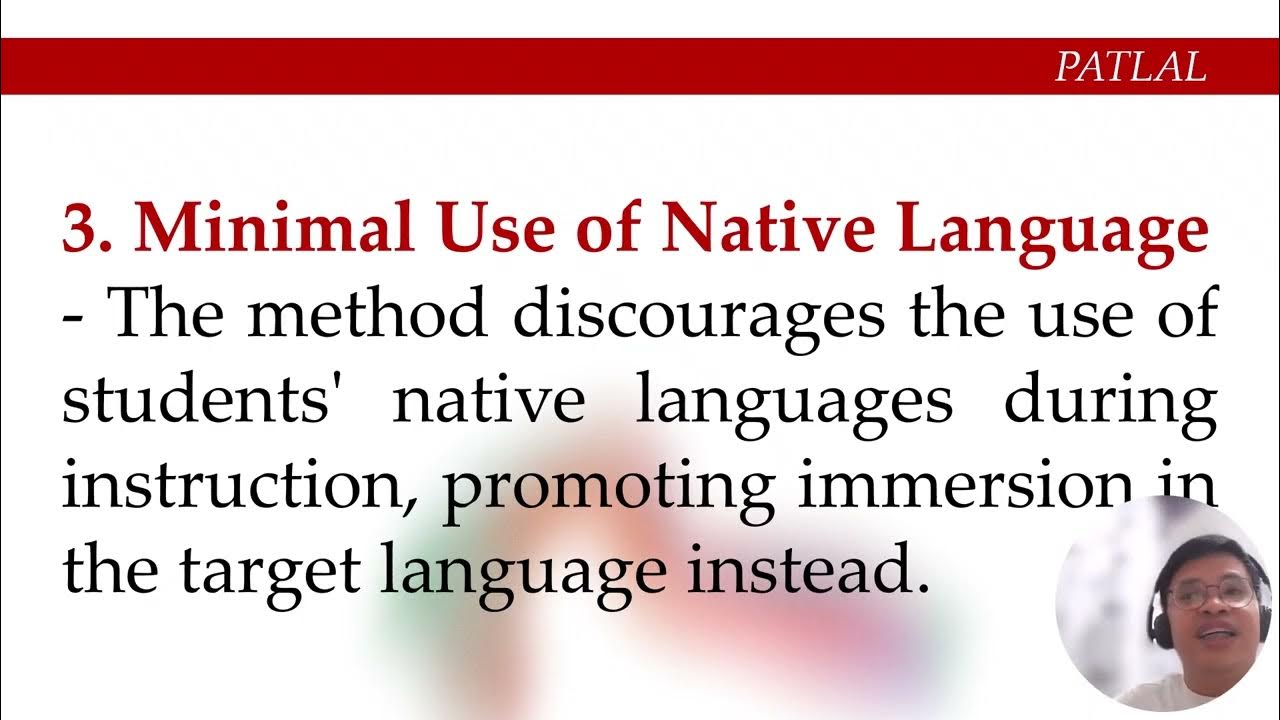Prof. Ellis on task-based pedagogy: the what, why and how
Summary
TLDRIn this insightful discussion, Roger Ellis delves into Task-Based Language Teaching (TBLT), defining it through four key criteria: focus on meaning, presence of a gap, use of linguistic and non-linguistic resources, and a communicative outcome. Ellis emphasizes the rationale behind TBLT, highlighting its role in fostering implicit knowledge and incidental learning. He also addresses misconceptions, outlining effective TBLT procedures in various classroom settings, including large classes and those following a structural syllabus. Ellis concludes by advocating for a balanced approach, integrating TBLT with traditional methods for comprehensive language acquisition.
Takeaways
- 📝 Task-based language teaching (TBLT) is centered around tasks that require learners to create and understand communicative messages.
- 🔍 Tasks in TBLT have four key criteria: focus on meaning, presence of a gap (information or opinion), use of learners' own linguistic and non-linguistic resources, and a communicative outcome.
- 🌟 TBLT distinguishes itself from traditional teaching by requiring learners to create messages using their own language resources, not just manipulate given language.
- 💡 The rationale for TBLT is to develop implicit knowledge of language, enabling natural communication, as opposed to explicit knowledge which is often the focus of traditional methods.
- 🌱 TBLT supports incidental language acquisition, which is argued to be the primary mode of language learning, as opposed to intentional learning which has its limitations.
- 👥 TBLT can be implemented in various classroom settings, including large classes, and is not limited to group or pair activities.
- 🔄 Misconceptions about TBLT include the belief that it only involves speaking tasks or group work, when in fact it encompasses all language skills and can include input-based tasks.
- 👂 'Focus on form' within TBLT involves drawing learners' attention to linguistic forms during communicative tasks, facilitating the learning of new language structures.
- 🔑 TBLT can be adapted to work with a structural syllabus by developing 'focused tasks' that create a communicative context for the use of specific grammatical structures.
- 🔄 The speaker does not view TBLT as a complete replacement for the PPP (Present, Practice, Produce) approach, but rather as a complementary method that offers different learning experiences.
- 🏛 The importance of a balanced approach is highlighted, suggesting that both TBLT and PPP have their place in language education, depending on the context and goals.
Q & A
What is the core concept of task-based language pedagogy?
-The core concept of task-based language pedagogy is the 'task', which is defined by four key criteria: focus on meaning, presence of a gap (information or opinion), use of learners' own linguistic and non-linguistic resources, and a communicative outcome.
How does task-based language teaching differ from traditional language teaching approaches?
-Task-based language teaching differs from traditional approaches by requiring learners to create communicative messages using their own linguistic resources, rather than just manipulating language provided to them.
What are the four criteria that define a task in task-based language teaching?
-The four criteria are: 1) a primary focus on meaning, 2) the presence of a gap (information or opinion), 3) the use of learners' own linguistic and non-linguistic resources, and 4) a communicative outcome beyond the mere use of language.
Why is the development of implicit knowledge important in task-based language teaching?
-Implicit knowledge is important because it enables learners to participate naturally in communication, as opposed to relying on explicit knowledge which may not facilitate the same level of natural communication.
How does task-based language teaching cater to incidental language acquisition?
-Task-based language teaching caters to incidental language acquisition by creating conditions for language learning that mimic real-world communication, allowing learners to acquire language naturally through the process of completing tasks.
What misconception exists about task-based language teaching that involves group work?
-The misconception is that task-based language teaching only involves putting learners into pairs or groups for speaking tasks. However, it also includes input tasks and can be applied to all four language skills.
How can task-based language teaching be implemented in a large class setting?
-In a large class setting, task-based language teaching can be implemented through input-based tasks where the teacher provides the input and students process it to achieve a task outcome, or through teacher-class participatory structures that allow for focus on form and corrective feedback.
What is the role of 'focus on form' in task-based language teaching?
-'Focus on form' in task-based language teaching involves drawing learners' attention to specific linguistic forms they need for the task, either reactively through corrective feedback or proactively by the teacher feeding in examples of the target structure.
How can a structural syllabus be taught using a task-based approach?
-A structural syllabus can be taught using a task-based approach by developing 'focused tasks' that create communicative contexts for the use of predetermined grammatical structures, allowing for both incidental and intentional learning.
What is the relationship between task-based language teaching (TBLT) and the traditional PPP (Present, Practice, Produce) approach?
-TBLT should not be seen as a complete replacement for the PPP approach but rather as a complement that offers a different learning experience. It is about finding a balance between TBLT for incidental learning and PPP for intentional learning of certain grammatical features.
What are the advantages of the interactions that occur in a task-based language teaching lesson compared to a PPP lesson?
-The interactions in a TBLT lesson more closely match real-life communication, providing learners with the experience of using and learning language in a more natural and contextually relevant manner than the more structured interactions of a PPP lesson.
Outlines

此内容仅限付费用户访问。 请升级后访问。
立即升级Mindmap

此内容仅限付费用户访问。 请升级后访问。
立即升级Keywords

此内容仅限付费用户访问。 请升级后访问。
立即升级Highlights

此内容仅限付费用户访问。 请升级后访问。
立即升级Transcripts

此内容仅限付费用户访问。 请升级后访问。
立即升级5.0 / 5 (0 votes)






